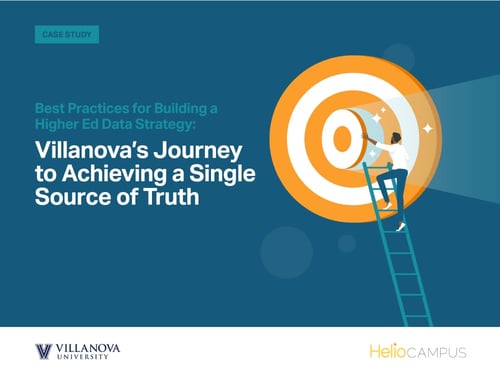Higher Education Data Analytics
Building a Data Strategy for Higher Education

Villanova University
Villanova University (Nova), established in 1842, is a private Catholic high research activity (R2) doctoral institution serving approximately 11,000 undergraduate, graduate, and law students.
Over time, dissatisfaction built among business users, college deans, and senior administrators around the lack of easy and timely access to data for decision-making. To solve this problem, the Provost created the Office of Decision Support and Data Integrity (ODSDI) charged with advancing a culture of data sharing, data stewardship and data-informed decision-making. Central to this work was the creation of a strong and sustainable data infrastructure and enhanced data governance along with building an operational framework that would maximize ROI for the university’s initiatives.
How Villanova Uses the Data
The Missing Holistic View
Villanova was lacking a holistic view of their institutional data due to their decentralized nature, which created a challenge for data tools and reporting methods to inform decision-making. The HelioCampus data enabled Villanova to have centralized data that combined data from different source systems to discover insights to aid in long-term strategies.
A Partner with Higher Ed Experience
Once they determined what the University was lacking, they needed a partner who could ensure they were investing in the right solution. HelioCampus was the right partner to add value to their data platform and set up the right environment to centralize the data across the institution. Leadership is now equipped to make data-driven decisions that accurately reflect campuswide initiatives in tandem with student needs.
A Partnership Beyond Technology
With HelioCampus’s help, Villanova was able to move through its data transformation faster, more efficiently, and with fewer headaches. And the partnership went beyond building a data platform.



